The Demon Slayer Infinity Castle Arc marks the climactic final battle between the Demon Slayer Corps and Muzan's most powerful demons. This arc is perfect for anime fans who want to understand the series' explosive conclusion, manga readers comparing adaptations, and newcomers curious about what makes this storyline so compelling.
You'll discover how the Infinity Castle's mind-bending architecture creates the perfect battleground for epic confrontations between beloved characters and Upper Moon demons. We'll explore the major fight sequences that define this arc, from Tanjiro's final showdown with Muzan to the heart-wrenching sacrifices that shape the series' ending. Finally, we'll examine how stunning animation and emotional storytelling combine to deliver one of anime's most talked-about finales.
Understanding the Infinity Castle Arc's Place in Demon Slayer

Timeline Position Within the Manga Series
The demon slayer infinity castle arc occupies chapters 137-183 of Koyoharu Gotouge's manga, positioning it as the climactic finale of the entire series. This arc directly follows the Hashira Training Arc, launching readers straight into the ultimate confrontation that fans had been anticipating since the series began. Unlike previous arcs that focused on specific locations or demons, this sequence takes place entirely within Muzan's twisted dimensional fortress, creating a contained yet expansive battleground for the final showdown.
The arc's placement makes perfect narrative sense, coming after all the major character development and power-ups have been established. By this point in the story, Tanjiro has mastered Sun Breathing, the Hashira have reached their peak abilities, and Nezuko has overcome her demon nature. The timing creates maximum emotional investment, as readers have spent over 130 chapters growing attached to these characters before witnessing their ultimate test.
Connection to Previous Story Arcs
Every major story thread from previous arcs converges in the Infinity Castle sequence. The Entertainment District Arc introduced Upper Moon demons and showcased the true power gap between Hashira and the strongest demons. The Swordsmith Village Arc revealed Tanjiro's connection to Sun Breathing and the original demon slayer, while the Hashira Training Arc prepared all characters for this final battle.
Muzan's personal vendetta against Tanjiro's family, first revealed in the Final Selection Arc, reaches its climax here. The breathing techniques, demon blood arts, and character relationships established throughout the series all play crucial roles in determining battle outcomes. Even seemingly minor elements like Tamayo's research and Yushiro's abilities become pivotal to Muzan's eventual defeat.
The arc also pays off long-standing mysteries, including the truth about Kokushibo's identity as Michikatsu Tsugikuni and his relationship with Yoriichi. These revelations add emotional weight to battles that might otherwise feel like straightforward action sequences.
Significance as the Final Major Battle Sequence
This arc represents the series' ultimate test of everything readers have learned about the demon slayer world. Unlike previous battles against individual Upper Moons, the Infinity Castle forces multiple simultaneous confrontations, splitting the cast across different battlefields while maintaining narrative cohesion.
The arc's structure as a final battle sequence means every fight carries life-or-death stakes with permanent consequences. Character deaths here aren't temporary setbacks but definitive endings that reshape the story's emotional landscape. The battles showcase each character's growth while acknowledging the true cost of their war against demons.
Muzan's role as the final antagonist brings the series full circle, connecting back to the very first chapter where he killed Tanjiro's family. The Infinity Castle becomes both a physical and metaphorical maze that the protagonists must navigate to reach their ultimate goal of ending the demon threat forever.
Key Characters and Their Roles in the Infinity Castle
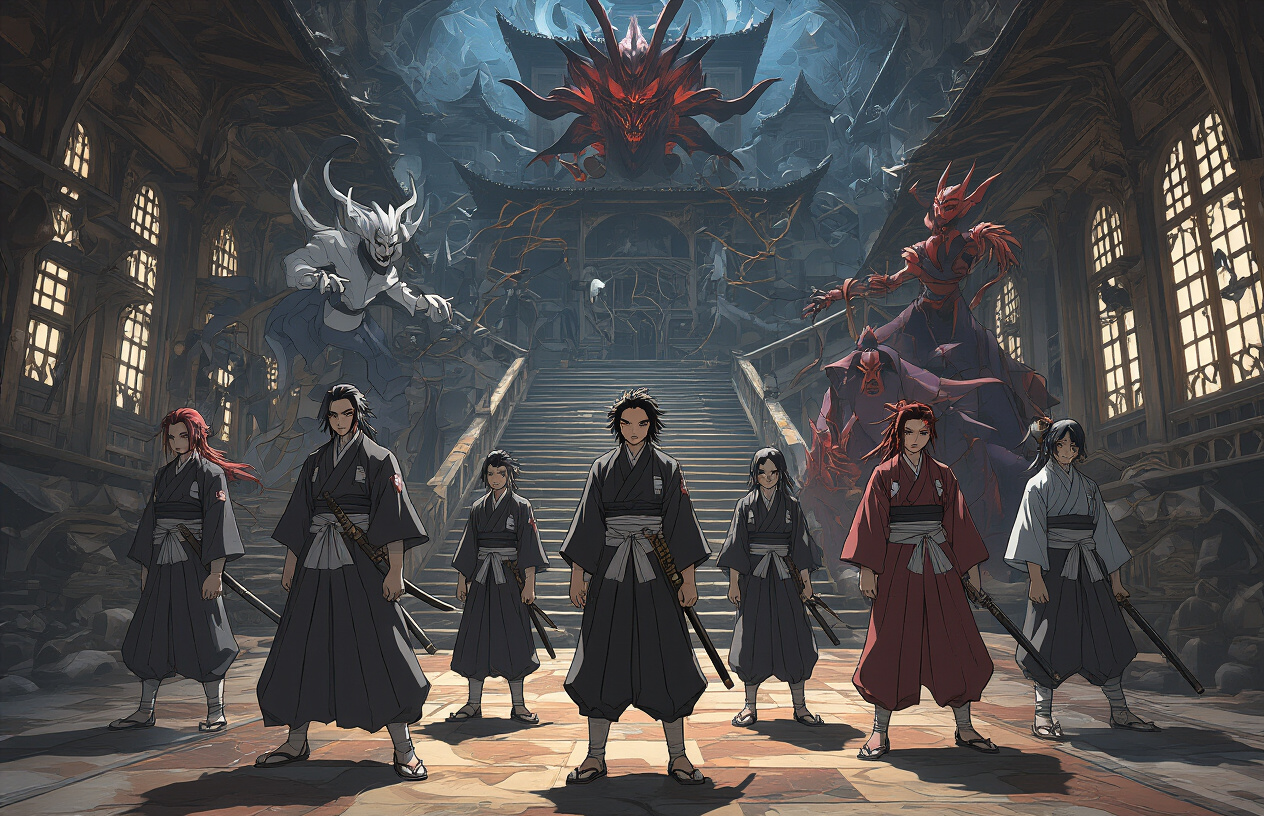
Tanjiro's character development and new abilities
The demon slayer infinity castle arc showcases Tanjiro at his most evolved state as both a warrior and character. His mastery of the Hinokami Kagura reaches unprecedented levels, with each form flowing seamlessly into devastating combination attacks that leave even Upper Moon demons struggling to counter. The arc reveals deeper layers of his demon slayer mark's power, pushing his physical capabilities beyond what seemed possible in earlier battles.
What makes Tanjiro's development particularly compelling is his enhanced empathy abilities. His unique skill to perceive the emotions and memories of demons becomes crucial during several confrontations, allowing him to understand his enemies' tragic pasts while maintaining his resolve to protect humanity. This emotional intelligence proves just as valuable as his combat prowess.
The psychological weight of previous battles manifests in Tanjiro's fighting style, making him more strategic and less impulsive. He demonstrates remarkable growth in reading battle situations and coordinating with fellow demon slayers, showing how his experiences have shaped him into a true leader rather than just a skilled fighter.
Hashira members and their individual battles
Each Hashira faces their ultimate test within the castle's twisted corridors, with battles that highlight their unique fighting philosophies and personal stakes. Giyu Tomioka's water breathing techniques reach artistic perfection as he confronts demons who challenge not just his physical abilities but his emotional barriers that have defined his character throughout the series.
Sanemi Shinazugawa's wind breathing creates devastating tornado-like attacks that tear through the castle's supernatural architecture. His battle sequences reveal the raw fury beneath his harsh exterior, while also showing moments of tactical brilliance that prove his position among the elite demon slayers.
The Stone Hashira Gyomei Himejima delivers some of the arc's most visually spectacular combat sequences. His repetitive prayer chants combined with his massive flail and axe create rhythmic battle sequences that feel almost ritualistic in their intensity.
| Hashira | Primary Technique | Key Battle Moment |
|---|---|---|
| Giyu Tomioka | Water Breathing | Eleventh Form revelation |
| Sanemi Shinazugawa | Wind Breathing | Coordinated Upper Moon assault |
| Gyomei Himejima | Stone Breathing | Transparent World activation |
Upper Moon demons and their deadly powers
The remaining Upper Moon demons unleash abilities that redefine what viewers thought possible within the demon slayer infinity castle arc's power system. Each demon presents unique challenges that force the heroes to adapt their fighting styles completely, creating battles that feel fresh despite following familiar shonen battle structures.
Akaza's compass needle technique reaches terrifying new heights, creating prediction abilities that make him nearly untouchable in close combat. His regeneration speed increases dramatically within the castle's demonic atmosphere, making every landed hit feel like a small miracle for his opponents.
Doma's ice-based blood demon art transforms entire sections of the castle into frozen death traps. His ability to create ice clones of himself leads to some of the arc's most confusing and visually striking battle sequences, where distinguishing between real and fake becomes a matter of life and death.
The psychological warfare employed by these demons proves just as dangerous as their physical attacks. They exploit the personal traumas and insecurities of each demon slayer, creating internal conflicts that must be resolved before victory becomes possible.
Muzan's ultimate plan revealed
The demon slayer infinity castle arc finally unveils Muzan's centuries-long strategy, revealing layers of manipulation and planning that extend far beyond simple demon creation. His goal to achieve perfect immortality drives every decision, from the castle's construction to the specific demons he's chosen to keep alive.
The castle itself serves as more than just a battleground—it's revealed as a massive organism connected to Muzan's consciousness, allowing him to manipulate reality within its walls. This connection explains the impossible architecture and constantly shifting layout that confuses and separates the demon slayers throughout their infiltration.
Muzan's ability to share memories and experiences with his demons creates a hive-mind effect that makes coordination between his forces unnaturally precise. The heroes discover they're not just fighting individual opponents but battling against a collective intelligence that learns and adapts from every encounter.
His ultimate plan involves consuming all remaining demons to achieve a perfect form, making the battles against Upper Moons feel like desperate attempts to prevent an apocalyptic transformation that would make him truly unstoppable.
The Infinity Castle Setting and Its Unique Features
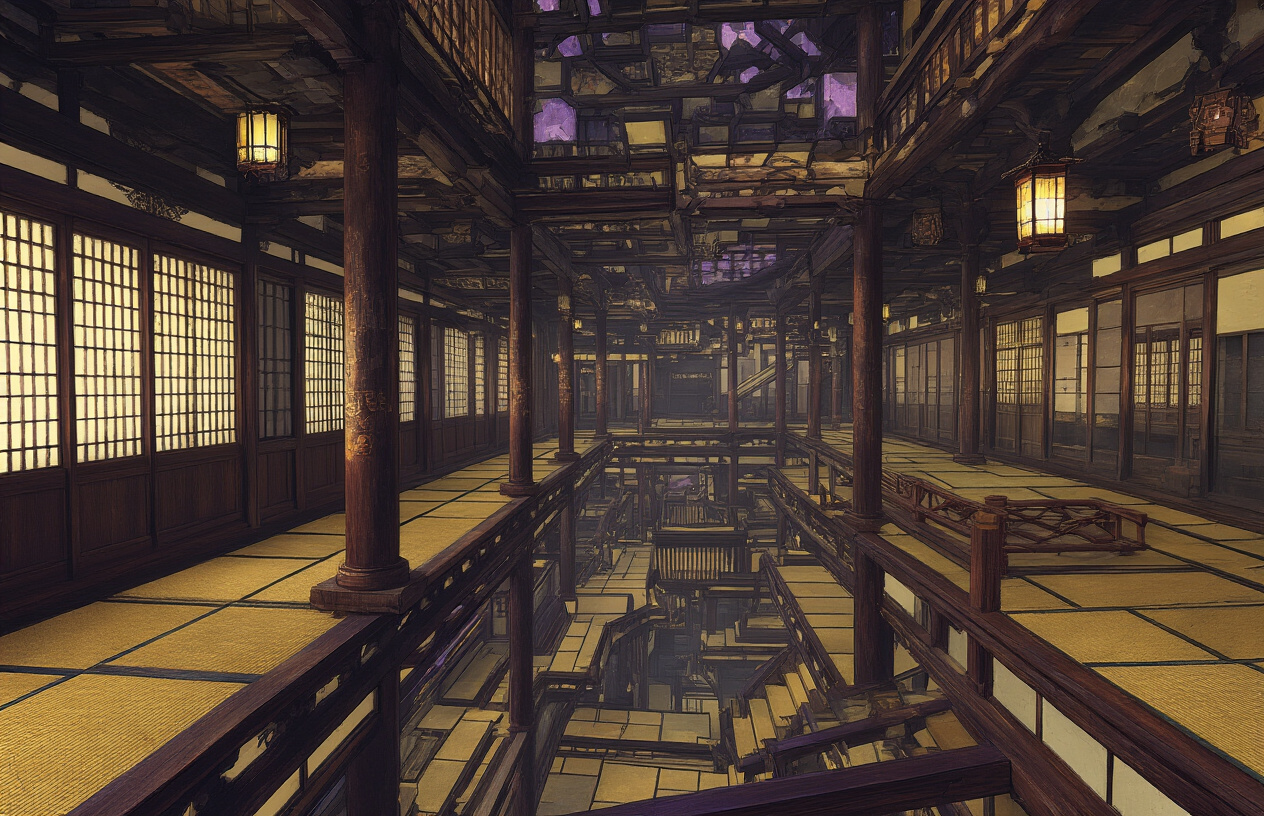
Nakime's Blood Demon Art creating the battlefield
Nakime's Blood Demon Art transforms the demon slayer infinity castle arc into one of the most visually striking and tactically complex battlegrounds in anime history. Her biwa-based abilities allow her to manipulate the entire fortress with musical strumming, creating rooms, hallways, and chambers that materialize and vanish at will. The castle exists as an extension of her consciousness, responding instantly to her musical commands and emotional state.
The biwa demon's power goes beyond simple construction - she can control gravity within different sections, rotate entire rooms 360 degrees, and create impossible geometric spaces that defy physics. Walls become floors, ceilings transform into doorways, and what appears to be a straight corridor can loop back on itself endlessly. This supernatural architecture serves as both weapon and shield, allowing Nakime to separate enemies, trap intruders, or funnel battles into specific locations that favor the demons.
Her musical manipulation creates an environment where traditional combat strategies become obsolete. The castle responds to the rhythm of her playing, with faster tempos triggering rapid structural changes and slower melodies creating more subtle architectural shifts. This dynamic battlefield challenges every character to adapt their fighting styles to an ever-changing environment.
Constantly shifting architecture and maze-like structure
The Infinity Castle's architecture defies conventional understanding of space and structure. Rooms exist in multiple dimensions simultaneously, with doorways leading to chambers that shouldn't physically connect. The maze-like design creates a psychological warfare element, where even the most experienced demon slayers can become disoriented within minutes of entry.
Staircases spiral in impossible directions, leading upward but somehow depositing travelers on lower levels. Corridors stretch infinitely in some areas while compressing into claustrophobic spaces in others. The wooden floors, walls, and traditional Japanese architectural elements shift seamlessly between different configurations, creating an aesthetic that's both beautiful and terrifying.
The structure's unpredictability becomes a character in itself during the demon slayer infinity castle arc. Fighters must constantly adapt to changing footing, disappearing platforms, and walls that suddenly become attack vectors. The castle's interior can expand to accommodate massive battles or contract to force intimate duels, all at Nakime's whim.
| Architectural Feature | Effect on Combat | Strategic Use |
|---|---|---|
| Rotating rooms | Disrupts balance and positioning | Separates team formations |
| Gravity shifts | Changes attack angles and movement | Confuses spatial awareness |
| Infinite corridors | Creates psychological pressure | Isolates individual fighters |
| Collapsing sections | Forces rapid repositioning | Eliminates escape routes |
Strategic advantages and disadvantages for both sides
The Infinity Castle creates a complex tactical environment where advantages and disadvantages shift as rapidly as the architecture itself. For the demons, the constantly changing battlefield offers numerous strategic benefits. They can be repositioned instantly to favorable locations, separated from overwhelming odds, or protected behind newly-formed barriers. Nakime's ability to control the environment means demons can appear anywhere within the castle, creating surprise attacks and ambushes.
Upper Moon demons particularly benefit from the castle's design, as their enhanced abilities allow them to adapt quickly to environmental changes. The disorienting nature of the space works in their favor, as they're naturally more comfortable with supernatural environments than human fighters.
However, the demon slayers also discover ways to turn the castle's features to their advantage. The shifting architecture sometimes creates unexpected opportunities for flanking maneuvers or escape routes. Seasoned Hashira learn to read the castle's patterns, anticipating changes and using momentum from rotating rooms to enhance their attacks.
The biggest disadvantage for demon slayers lies in their separation from teammates. The castle's maze-like structure fragments coordinated attacks and leaves individual fighters isolated against multiple demon opponents. Communication becomes nearly impossible when corridors can extend infinitely or rooms can seal off completely. The psychological pressure of fighting in an environment that actively works against them tests even the strongest warriors' mental fortitude during this pivotal arc.
Major Battles and Fight Sequences
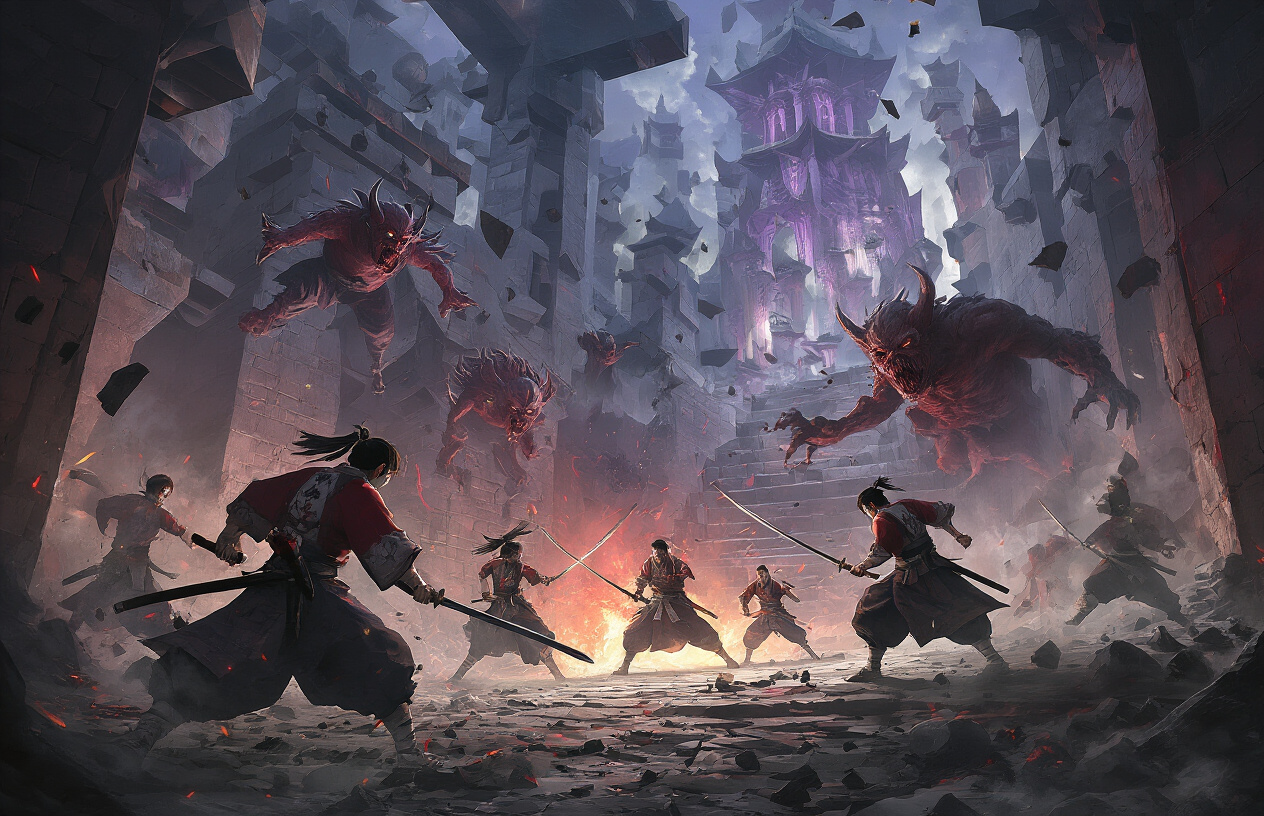
Giyu and Tanjiro versus Akaza Showdown
The battle between Water Hashira Giyu Tomioka, Tanjiro Kamado, and Upper Rank Three Akaza stands as one of the most emotionally charged confrontations in the demon slayer infinity castle arc. This fight showcases the incredible growth Tanjiro has achieved since his first encounter with Akaza during the Mugen Train incident. The dynamic between the stoic Giyu and the passionate Tanjiro creates a compelling partnership that pushes both fighters beyond their limits.
Akaza's relentless combat style and regenerative abilities force the duo to coordinate their attacks with precision. Giyu's mastery of Water Breathing techniques complements Tanjiro's unique combination of Water and Hinokami Kagura forms. The battle reaches its climax when Tanjiro taps into the Transparent World technique, allowing him to perceive Akaza's fighting spirit and emotional core. This pivotal moment transforms the fight from a physical confrontation into a psychological battle where Tanjiro attempts to reach whatever humanity remains within the demon.
Shinobu's Sacrifice Against Douma
Shinobu Kocho's final confrontation with Upper Rank Two Douma represents one of the most heartbreaking yet strategically brilliant moments in the series. Knowing she lacks the physical strength to decapitate such a powerful demon, Shinobu devises an intricate poison-based strategy that requires the ultimate sacrifice. Her body becomes a weapon, saturated with lethal toxins specifically designed to kill demons.
The fight reveals Douma's twisted connection to Shinobu's past, as he's revealed to be the demon who murdered her sister Kanae. This personal vendetta adds layers of emotional weight to every exchange. Shinobu's calculated approach contrasts sharply with Douma's casual cruelty and false emotions. Even as Douma consumes her, Shinobu maintains her composure, knowing her sacrifice will weaken him for the battles to come. Her death serves as both a tragic loss and a strategic victory that sets the stage for others to finish what she started.
Inosuke and Kanao's Revenge Mission
Following Shinobu's sacrifice, Inosuke Hashibira and Kanao Tsuyuri carry forward her legacy in their pursuit of Douma. This partnership brings together two fighters with deeply personal connections to the fallen Insect Hashira. Kanao, as Shinobu's adopted sister and student, channels her grief into deadly precision with her Flower Breathing techniques. Inosuke discovers his own tragic connection to Douma, learning that this demon murdered his mother years ago.
The fight showcases both characters' evolution from their earlier appearances. Kanao breaks free from her inability to make decisions independently, using her Final Form: Equinoctial Vermillion Eye technique despite the risk of blindness. Inosuke demonstrates remarkable growth in both technique and emotional maturity, moving beyond his usual reckless abandon to fight with calculated fury. Their combined assault exploits the weakening effects of Shinobu's poison, creating openings that neither could achieve alone. The battle becomes a testament to how bonds between comrades can transcend death and fuel extraordinary determination.
Multiple Hashira Coordinated Attacks
The demon slayer infinity castle arc features unprecedented coordination between the remaining Hashira as they face multiple Upper Rank demons simultaneously. These coordinated assaults represent the culmination of years of training and the deep trust built between these elite warriors. The Stone Hashira Gyomei Himejima leads several of these coordinated efforts, his immense strength and tactical awareness making him an ideal battlefield commander.
The Hashira adapt their individual breathing techniques to complement each other's abilities, creating combination attacks that amplify their collective power. Sound Hashira Tengen Uzui's explosive techniques create openings that allow Wind Hashira Sanemi Shinazugawa to deliver devastating close-range attacks. Meanwhile, Mist Hashira Muichiro Tokito uses his speed and agility to strike from unexpected angles while his comrades maintain frontal pressure.
Zenitsu's Confrontation with Kaigaku
Zenitsu Agatsuma's battle against his former training partner Kaigaku represents a deeply personal conflict that tests everything the Thunder Breathing user has learned. Kaigaku's transformation into Upper Rank Six creates a bitter irony - the coward who fled when their master needed him most now possesses demonic power, while Zenitsu, who seemed weak and fearful, has grown into a formidable demon slayer.
This confrontation forces Zenitsu to overcome his self-doubt and embrace his true potential. The fight showcases his mastery of Thunder Breathing's first form while revealing his creation of a seventh form - a technique born from his respect for their shared master. Kaigaku's arrogance and mockery of their deceased teacher fuel Zenitsu's determination, transforming his usual fear-driven unconscious fighting into conscious, controlled fury. The battle serves as Zenitsu's ultimate character development moment, where he finally accepts his own strength and worth as both a demon slayer and a person.
Character Deaths and Emotional Impact
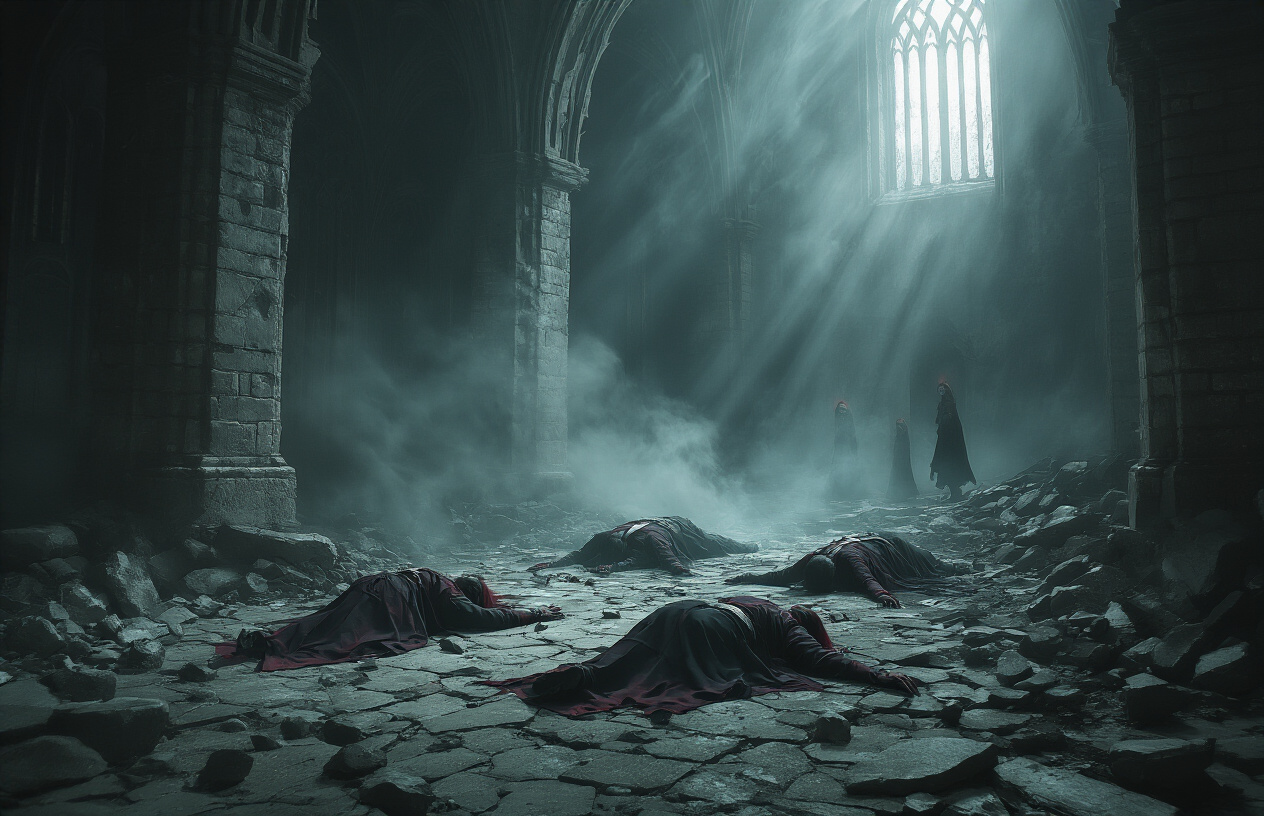
Hashira sacrifices that changed everything
The Infinity Castle arc delivered some of the most devastating losses in the entire series, with several Hashira making ultimate sacrifices that reshaped the entire conflict. Kyojuro Rengoku's fiery determination had already set the tone earlier in the series, but the Infinity Castle pushed these elite demon slayers to their absolute limits.
Shinobu Kocho's calculated sacrifice stands as perhaps the most strategic death in the demon slayer infinity castle arc. Her decision to poison herself and allow Doma to consume her wasn't just heroic—it was brilliantly tactical. She transformed her own body into a weapon, using her extensive knowledge of wisteria poison to create a trap that would ultimately lead to the Upper Moon Two's destruction. This moment perfectly captured her character's blend of scientific precision and fierce determination.
Mitsuri Kanroji and Obanai Iguro's intertwined fate during their battle against Muzan created an emotionally devastating climax. Their confessions of love amid the chaos of battle, followed by their deaths, demonstrated how even in the darkest moments, human connection could shine through. Their sacrifice wasn't just about defeating demons—it represented the power of genuine bonds between people.
Gyomei Himejima's final stand showcased the Stone Hashira's unwavering resolve. As the strongest among them, his death carried enormous weight, symbolizing that even the most powerful warriors weren't invincible against Muzan's overwhelming strength.
Heartbreaking losses among supporting characters
Beyond the Hashira, the Infinity Castle claimed numerous beloved supporting characters whose deaths hit fans particularly hard. Genya Shinazugawa's tragic end stands out as especially cruel—his unique ability to temporarily gain demon powers through consumption made him invaluable in battle, but his human limitations ultimately caught up with him.
The deaths of various Kakushi and lower-ranking demon slayers throughout the arc served as constant reminders of the massive human cost of this final battle. These characters, while not as prominent as the main cast, had been familiar faces throughout the series, making their losses feel personal and immediate.
What made these deaths particularly impactful was how they weren't just plot devices—each loss served to highlight the different aspects of sacrifice and heroism. Some died protecting others, some died buying time for crucial strategies, and others died simply because they refused to abandon their posts despite overwhelming odds.
How deaths motivated surviving fighters
Each death during the demon slayer infinity castle arc became fuel for the remaining fighters, creating a cascade of motivation that drove the survivors to push beyond their perceived limits. Tanjiro's reactions to witnessing these losses showcased his growth as both a fighter and a leader—he learned to channel his grief into focused determination rather than letting it overwhelm him.
The psychological impact of watching comrades fall created a complex emotional landscape for the surviving characters. Rather than breaking their spirits, these losses seemed to crystallize their resolve. Inosuke's character development accelerated dramatically as he processed the reality of permanent loss, while Zenitsu found new depths of courage when faced with the possibility of losing everyone he cared about.
The deaths also served to eliminate any remaining naivety about the true cost of their mission. The surviving demon slayers could no longer harbor any illusions about walking away from this conflict unscathed. This stark reality check pushed characters like Tanjiro and his companions to make increasingly desperate but effective tactical decisions, knowing that half-measures would only lead to more casualties.
Animation Quality and Visual Spectacle
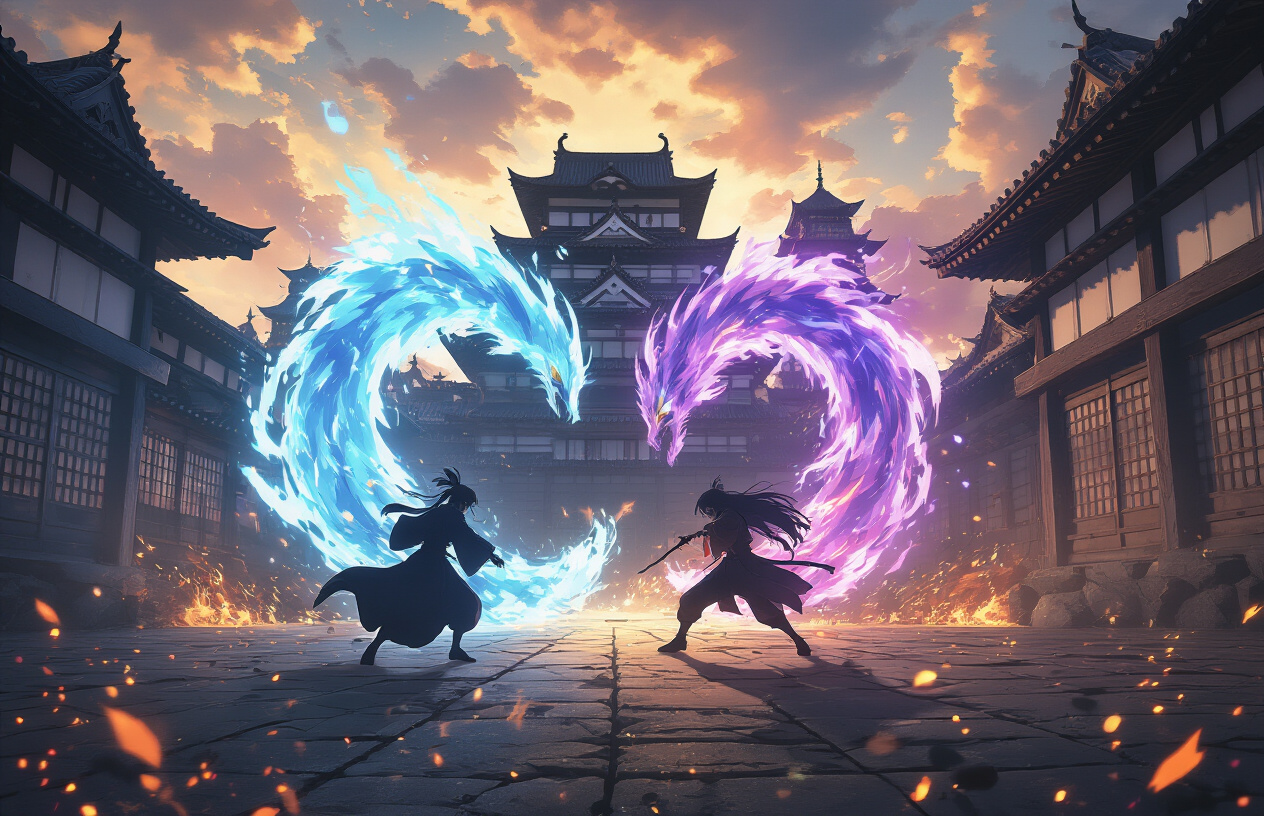
Ufotable's Animation Techniques for Complex Battles
Ufotable revolutionizes action sequences in the demon slayer infinity castle arc through their masterful blend of 2D and 3D animation techniques. The studio's signature approach involves creating intricate camera movements that flow seamlessly through multi-layered battlefields, allowing viewers to experience combat from impossible angles. Their use of particle effects reaches new heights during intense confrontations, with debris, blood splatter, and environmental destruction rendered with photorealistic precision.
The studio employs rotoscoping techniques combined with hand-drawn animation to achieve fluid character movements during high-speed combat. Each sword swing carries weight and momentum, while demon attacks feel genuinely threatening through careful attention to impact frames and follow-through animation. Ufotable's digital compositing layers multiple animation elements - from character motion to background destruction - creating depth that makes every frame feel cinematic.
Their color grading during battle sequences uses dynamic lighting shifts to emphasize emotional beats and power escalations. The studio strategically alternates between warm and cool color palettes to distinguish between human determination and demonic malevolence, creating visual storytelling that supports the narrative without overwhelming it.
Breathing Technique Visualizations at Their Peak
The breathing techniques in this arc showcase Ufotable's most ambitious visual interpretations of supernatural abilities. Each breathing style receives unique visual language - water breathing flows like liquid mercury, while fire breathing erupts with volcanic intensity. The animations don't just show the techniques; they make viewers feel the elemental forces behind each strike.
Tanjiro's advanced water breathing forms create rippling effects that distort reality around his blade, while his fire god techniques generate heat distortion that makes the air itself shimmer. The studio uses practical lighting effects to make these supernatural abilities feel grounded in physical reality, even as they defy natural laws.
Sound breathing techniques produce visible sonic waves that ripple through environments, shattering architecture and creating devastating chain reactions. Thunder breathing appears as literal lightning strikes, complete with electromagnetic interference effects on surrounding objects. Each breathing style maintains consistent visual rules throughout the arc, creating believable supernatural physics.
Demon Transformations and Grotesque Imagery
Ufotable pushes boundaries with demon transformations that blend body horror with artistic beauty. Upper Moon demons undergo metamorphoses that are simultaneously repulsive and mesmerizing, with flesh reshaping itself in ways that challenge viewer comfort while maintaining visual coherence. The studio uses organic modeling techniques to create transformations that feel disturbingly natural.
Muzan's various forms showcase the pinnacle of demonic design, with each transformation revealing new layers of grotesque detail. His cellular restructuring appears visceral and painful, emphasizing his desperation as the final confrontation intensifies. The animation team balances shocking imagery with artistic restraint, ensuring that horror serves the story rather than existing purely for shock value.
Blood demon arts receive distinct visual treatments that reflect each demon's personality and power level. Nakime's spatial manipulation creates impossible architectural shifts that defy perspective, while other demons' abilities manifest through unique particle systems and environmental effects. The grotesque elements never overshadow the human characters' heroism, instead highlighting the stark contrast between demonic corruption and human resilience.
Fan Reception and Cultural Impact
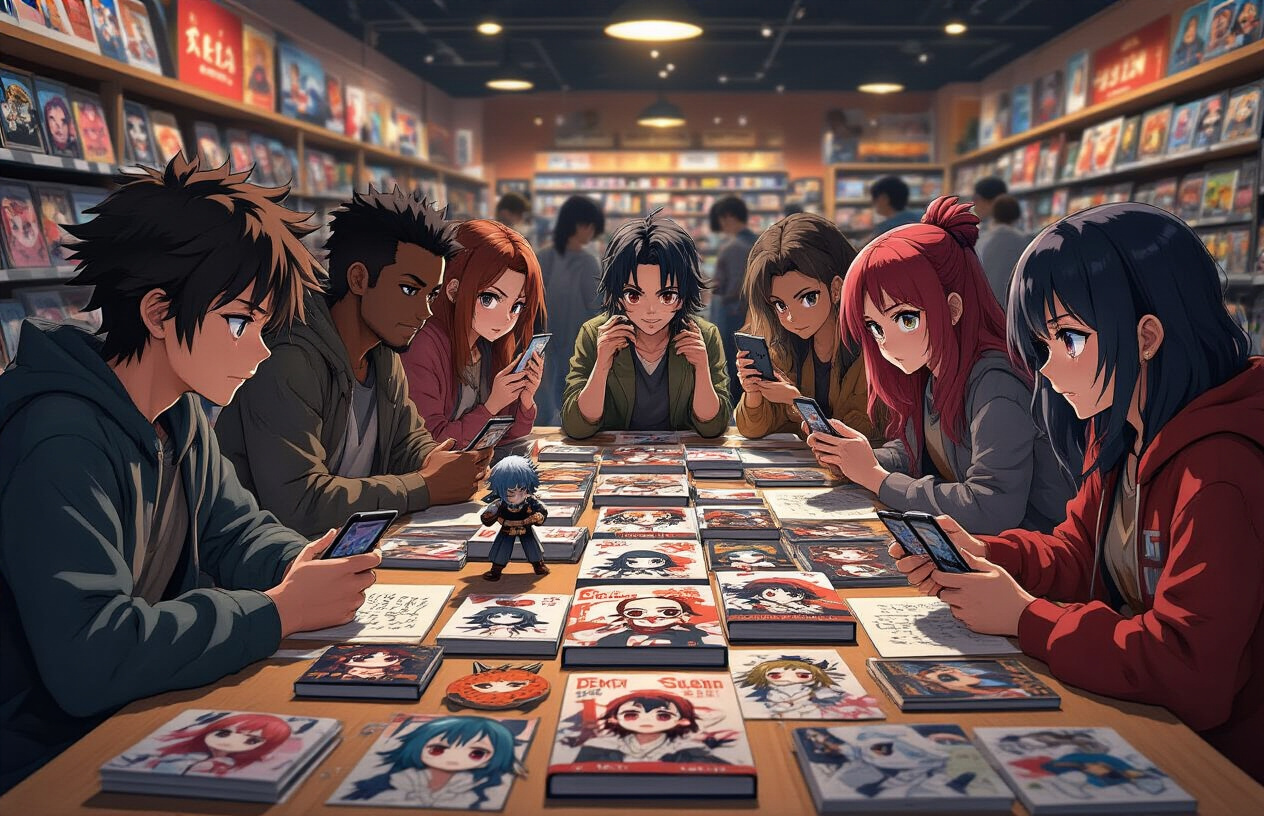
Manga Reader Reactions Versus Anime Expectations
Manga readers who experienced the demon slayer infinity castle arc in its original format came into the anime adaptation with sky-high expectations and deep emotional attachments to pivotal moments. The raw intensity of Muzan's final confrontation and the devastating character losses hit differently when readers first encountered them in black and white panels, relying on their imagination to fill in the brutal details.
When the anime adaptation arrived, these same fans became unofficial gatekeepers of quality, scrutinizing every animation choice and pacing decision. Many praised how Studio Ufotable elevated the source material, particularly during the Upper Moon battles where the studio's signature fluid animation and particle effects transformed static manga panels into breathtaking spectacles. However, some purists felt certain emotional beats lost their punch when stretched across multiple episodes, arguing that the manga's compressed storytelling created more impactful moments.
Anime-only viewers approached the arc with fresh eyes, experiencing genuine shock at major character deaths and plot twists that manga readers had been anticipating for years. This created an interesting dynamic on social platforms where manga readers carefully navigated spoiler territory while anime fans theorized wildly about upcoming events. The contrast between these two viewing experiences sparked countless discussion threads comparing the mediums' strengths.
Social Media Buzz and Viral Moments
The demon slayer infinity castle arc dominated social media platforms with an unprecedented wave of fan content and viral moments. TikTok exploded with reaction videos as anime-only viewers processed shocking character deaths, with many creators filming themselves in real-time as they watched episodes. These authentic emotional reactions garnered millions of views, creating a secondary entertainment phenomenon around the primary content.
Twitter became ground zero for episode discussions, with hashtags related to specific battles trending worldwide within hours of episodes airing. Fan artists flooded platforms with tribute artwork, particularly following major character moments, creating a visual memorial that amplified the arc's emotional impact. The speed at which high-quality fan art appeared after each episode demonstrated the passionate dedication of the community.
YouTube analysis videos dissecting fight choreography, animation techniques, and hidden details accumulated massive view counts, with some creators building entire channels around frame-by-frame breakdowns of key sequences. The arc's complex battle scenarios provided endless content for theorists and animation enthusiasts who dove deep into Studio Ufotable's technical achievements.
Memes emerged organically from dramatic moments, with fans creating humorous content that helped process the arc's intense emotional weight. These lighter takes balanced the heavy themes while keeping engagement levels high across all demographics.
Merchandise and Commercial Success Following the Arc
The commercial explosion following the demon slayer infinity castle arc's anime adaptation broke multiple industry records, with merchandise sales reaching unprecedented levels for the franchise. Figurine manufacturers struggled to keep pace with demand as pre-orders for detailed battle scene recreations sold out within minutes of announcement. Premium collectibles featuring final forms of major characters commanded premium prices, with some limited editions selling for hundreds of dollars on secondary markets.
Clothing collaborations expanded beyond traditional anime merchandise, with high-end fashion brands creating demon slayer infinity castle arc inspired collections that appealed to mainstream consumers. These partnerships introduced the series to new demographics while generating substantial revenue streams that extended far beyond typical anime merchandising.
Gaming tie-ins capitalized on the arc's popularity with mobile game events, console game DLC, and entirely new titles built around the castle's unique setting. These interactive experiences allowed fans to engage with beloved characters and locations in new ways, extending the arc's cultural reach into different entertainment mediums.
The international licensing boom saw demon slayer infinity castle arc products appearing in major retail chains worldwide, from Target exclusives in North America to specialized pop-up stores in European markets. This mainstream retail presence marked the franchise's evolution from niche anime property to global entertainment phenomenon, with the arc serving as the catalyst for this unprecedented commercial success.

The Infinity Castle Arc stands as Demon Slayer's most intense and emotionally charged storyline, bringing together every major character for an epic final showdown. From the mind-bending architecture of Nakime's fortress to the devastating battles against the Upper Moons, this arc delivers on every front - stunning animation, heart-wrenching character moments, and fight scenes that push the boundaries of what anime can achieve. The losses we witness hit harder because we've grown to love these characters, making their sacrifices feel genuinely meaningful.
What makes this arc truly special is how it balances spectacular action with genuine emotional depth. The animation studio outdid themselves with visually stunning sequences that fans will remember for years to come, while the story gives each character their moment to shine before the final curtain falls. If you haven't experienced the Infinity Castle Arc yet, prepare yourself for an emotional rollercoaster that showcases exactly why Demon Slayer became a global phenomenon. This is peak storytelling that reminds us why we fell in love with Tanjiro's journey in the first place.
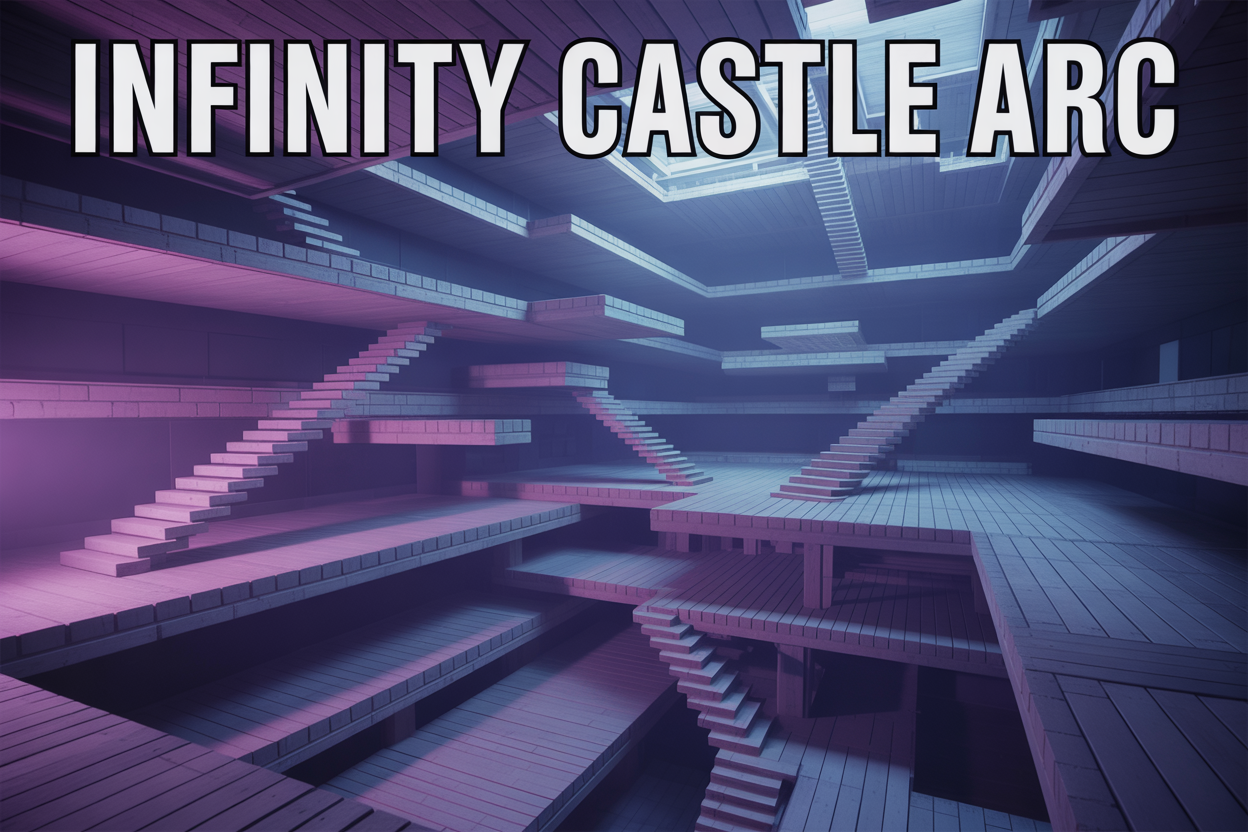
0 Comments